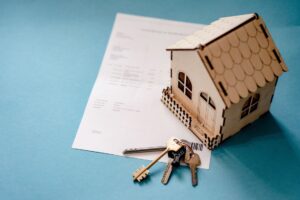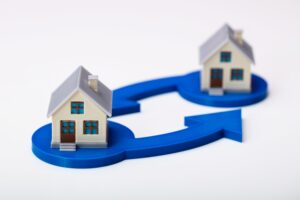Commercial real estate investors are constantly looking to put their capital into properties, and there are several available property types to choose from. However, knowing how to analyze commercial property makes it easier to identify profitable opportunities. So, how do you analyze a commercial property investment?
How Do You Analyze a Commercial Property Investment?
In order to analyze a commercial property investment, you’ll need to research potential comps, look up current leases and market trends, choose your investment strategy and management, estimate your construction and renovation costs as well as risks, and obtain loan terms. Once you’ve gathered all this data, you can analyze whether the investment makes sense for you or not.

After the preliminary research, you start actual property research using the data you have on the properties. You have to take into account several factors including figures, the property history, indications, and assurance. All these factors transform your speculation into a well-researched analysis.
As an investor, you want to take a look at the broader market, then narrow down your analysis to the specific property. Here is a step-by-step approach to analyzing commercial properties:
1. Study General Market Trends
Understanding the market before investing in a property is very crucial to achieving success. Before purchasing any commercial property, take your time to properly study the general market trends in the location of the property. This gives you a clear picture of the construction costs, the vacancy rate, the rental growth rate, and a comparison with similar properties in the market.
It also helps you to understand the timing of the market cycle. It allows you to determine the major economic drivers, the median household income and whether the population is growing or contracting, and why it is happening.
2. Conduct Property Analysis
After you have analyzed the general market trends and you are convinced about investing in a particular submarket because of its favorable market trends, the next thing to do is to conduct a property analysis.
Property analysis comprises an evaluation of various quantitative factors and qualitative factors. The quantitative factors you have to consider include:
- Income and Expenses
- Net Operating Income (NOI)
- Cash Flow
- Cash on Cash Returns
- Capitalization Rate
The qualitative factors, on the other hand, include:
- Property history
- Indications and assurance
- Building and lot analysis
3. Have the Right Management
The quality of its management grossly influences the performance and success of any commercial real estate property. In analyzing a property that is suitable for investments, you want to consider how well it can be managed.
As a commercial real estate investor, you can choose to either manage the property yourself, hire a manager, or retain the management team handling the property before the acquisition.
4. Assess the Risk
Commercial real estate investments like any other type of investment have their fair share of risks. This risk is spread across three major factors:

- The market
- The property
- The property management.
These factors introduce varying levels of risk into commercial real estate transactions and you need to understand them well to reduce your risk exposure.
Factors to Consider When Analyzing Commercial Properties
When analyzing commercial properties, you have to consider certain quantitative and qualitative factors. A combination of these factors provides you with well-rounded data to determine whether it is worth investing in or not.
Income and Expenses
As a commercial real estate investor, it is important to understand how to interpret and use data contained in a pro forma. The pro forma typically shows the estimated sales price. It also accounts for several other details about the property, including the monthly income and expenses, occasional vacancies, routine expenses, and other annual expenses.
Building and Lot Analysis
One of the first factors you have to consider is the building and lot. A building and lot analysis is an integral part of your due diligence. You want to know if the building and lot match your set criteria for investing, lending or servicing.
In simpler terms, building and lot analysis are all about analyzing the building size, its age, its characteristics and configuration, the lot size, and the local zoning. Local zoning is an integral aspect of this analysis because it helps you to understand the property type that is meant for a specific lot.
Financial Metrics
In analyzing commercial properties, you also want to consider more figures than just the income and expenses. You want to take a look at the NOI, the cash flow, the capitalization rates, and the cash on cash returns. These technical areas will help you make solid financial projections on the profitability of commercial property and how fast you can recoup your investments.
- NOI refers to Operating Income and it is what you have left after subtracting your operating expenses from your gross operating income. NOI helps you determine the fair market value of a property and its profitability but does not consider capital expenditure and mortgage.
- Cash flow, on the other hand, shows the flow of money in and out of a property and shows the actual profit being made. A property’s cash flow reflects the income after you subtract all the expenses from the total revenue generated.
- Another important metric, cash on cash return shows you how fast you can recoup your equity investment in a property.
- Capitalization rate, often called the cap rate, is a metric that helps investors determine the potential rate of return on a property. Cap rates are used as a measure of risk and they typically have an inverse relationship to the property value. This means that a lower cap rate indicates a more valuable property and vice versa.
Tenants
Before investing in a commercial property, especially an already existing one, you must consider the tenants and the risks that come with having them. You want to carefully consider the length of their tenancy, the rent that they are paying, and any outstanding liens or litigation issues that may affect your business.

Considering the length of tenancy of a tenant helps you understand if they are stable or not and if they have been successful. If they have stayed for a long time, they may be worth keeping because a long tenancy period could indicate stability and success. You also want to keep tenants that have options for renewal. When you compare the rent tenants are paying against the market expectations, you can make better-informed decisions on how to determine the rents moving forward.
If their rent is lower than the market value, you can choose to increase the rent and if they are paying higher than the market value, they may not stay too long before relocating. Generally speaking, you may want to avoid any tenant that is dealing with any significant legal or financial issues. This is typical because of the negative effect it may have on business for you.
Property History
All commercial properties have different histories with regard to sale, debt, and ownership. These histories can influence your interaction with that property in the present. This makes property history an integral factor for you to consider, as an investor. There are several aspects of property history that you want to pay attention to. Aspects of personal history you want to look at include:
- The year the property was built
- The installation dates for major building systems like the roof and HVAC system
- Sales history
- Mortgage history
- Tax valuations
- How long the current owner has owned the property.
You want to take a closer look at ownership patterns because of the information they can reveal. For example, you can tell that a property has historically underperformed or there are some hidden issues if the property has been turned over too frequently. It can show other red flags that require further due diligence.
Another key aspect of property history you must consider, as an investor, is performance. You should look at the performance of a commercial property to determine if it is worth investing in or not. You can measure performance using metrics like the current rents and the current vacancy rates and analyze it against the market average.
Tools for Analyzing Commercial Property Investments
Buying or selling commercial properties requires a lot of careful analysis, knowledge, and expertise. If you are looking to invest in the Cincinnati MSA, having the expertise of Si Vales Valeo Real Estate, can be very instrumental to the success of the deal. We are experts in market research and analysis, due diligence, negotiations, and transaction management.
Other than the pro forma earlier mentioned, there are a few other tools you can employ when conducting your analysis on commercial property investment. It is important to use a wide range of tools so that you get a clearer and larger picture of the property. Here are a few tools to use:
Public Property Records
Public property records are a useful tool when analyzing commercial property investments. The property records you want to go through include the deed, tax records, a property survey, mortgage documents, and any liens on the property.
The deed provides relevant information about the ownership history of the property, details about the current owner, when they bought it, and how much they paid. If the records show that there are liens on the property, you can determine if the property is distressed and whether the owner may have an increased motivation to make a deal.

You can get the necessary documents from the local Registry of Deeds, the local Assessor’s Office, or the local county appraisal district. For example, if you are looking to analyze commercial properties in the Cincinnati MSA, you can check in with the relevant county appraisal districts such as the Hamilton Central Appraisal District and Clermont County Auditor.
Real Estate Professionals
You can consult real estate professionals for their expert advice when evaluating and analyzing commercial real estate deals. It is always advisable that you hire your real estate professionals instead of relying on the seller’s brokers. This way, they have a fiduciary duty to protect your interests at all times. It also ensures that you have experts handling the transaction.
Si Vales Valeo Real Estate has a team of real estate professionals that can help you with every aspect of purchasing and selling commercial real estate properties.
The Property Owners
You can get very valuable information from property records and real estate professionals. However, having direct contact with the property owners, when possible, can be invaluable. When analyzing commercial properties, you should try to get in touch with the seller and have a one-on-one conversation with them.
This way, you can learn about their intentions and motivations for the property. You can get access to a lot of information that would not have been reflected on any legal documents. Having all of this information can be instrumental in making decisions about the deal.
Frequently Asked Questions
How Do You Calculate the Value of a Commercial Property?
The easiest way to calculate the value of a commercial property is to divide the property’s net operating income by the cost of the property. Keep in mind that there are several other ways to calculate the value of the commercial property and a combination of these methods gives a more accurate estimate of the value.
What Is the Difference Between Cap Rate and Yield?
Cap rate measures the relationship between the net operating income and the value of a commercial property. It is simply the net operating income of the property divided by its value. On the other hand, yield measures the relationship between the revenue and cost of a property.
What Is a Good Cap Rate for a Commercial Property?
The ideal cap rate for a commercial property typically depends on the asset class you are analyzing and the specific relevant market conditions. On average though, the ideal cap rate is somewhere between 8% to 10%
Conclusion
Analyzing commercial property investment can be technical, majorly because you need in-depth knowledge of the fundamentals before you can properly analyze commercial properties accurately. However, this process becomes easier with Si Vales Valeo Real Estate professionals on your side.






